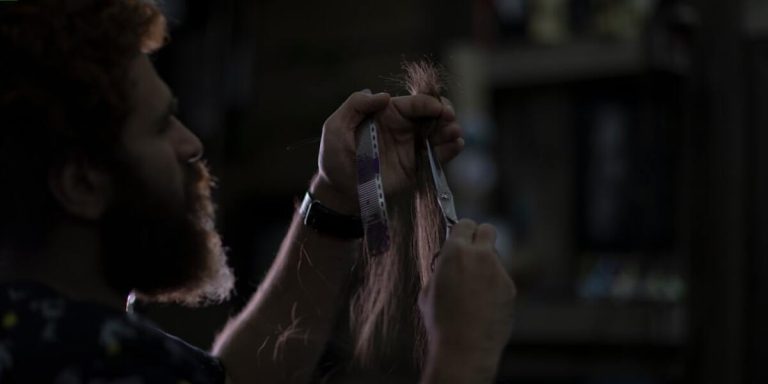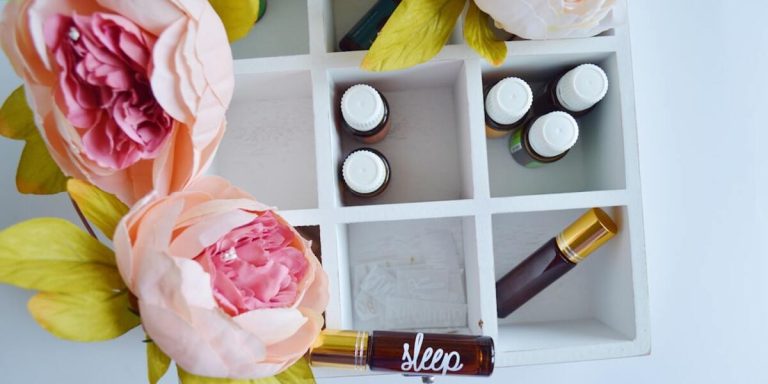Swimming and Hair Care: Protecting Your Locks from Pool Damage
Diving into the crystal-clear pool on a scorching summer’s day can be incredibly refreshing, but have you considered how this activity might affect your hair? This blog post combines the two crucial topics of “swimming and hair care”, revealing some expert tips to shield your locks from potential harm.
Swimming in pools frequently exposes our precious strands to chlorine – a disinfectant that keeps harmful bacteria at bay. While effective for maintaining clean water, it’s not quite so friendly towards human hair. Over time, it may lead to dryness and breakage if proper precautions aren’t taken.
Whether you’re an occasional swimmer or regularly spend hours submerged underwater practicing laps – everyone needs suitable strategies for combating these damaging effects.
Did you know?
Did you know that chlorine, commonly used in swimming pools to kill bacteria and prevent the spread of diseases, can actually strip your hair’s natural oils leading to dryness, brittleness, or even discoloration? Regular swimmers may notice a subtle green tinge on their locks caused by this!
Understanding the Impact of Chlorine on Hair Health
Diving into a refreshing pool is one of the favorite pastimes. But have you ever considered how exposure to swimming pool water affects your hair, particularly due to chlorine content? Chlorine is actively used in pools as a disinfectant, it keeps the waters safe by killing harmful bacteria and viruses.
However, this robust chemical agent isn’t quite friendly with our hair.
Chlorinated water strips away natural oils that protect your hair from damage leaving them dry and brittle. It creates microscopic holes in the strands making them more porous which leads to quick loss of moisture resulting in roughness and tangles. The issue gets escalated if you are fond of color-treating or chemically treating your locks since they are already prone to some level of damage.
Protect against harsh swimming realities by taking mindful Hair Care & Maintenance steps. Pre-pool prep involves:
- Soaking your hair in tap water to reduce chlorinated water absorption.
- Applying oil or conditioner to create a protective layer against chlorine.
Post-swim care is equally essential:
- Rinse with fresh, non-chlorinated water as soon as possible.
- Follow up with a deep conditioning treatment.
Keep following Soulphany for more tips on maintaining a healthy and beautiful mane, even with frequent exposure to chlorinated waters!
Signs of Chlorine Damage and How to Spot Them
Swimming is a great stress reliever, but the chlorine found in swimming pools can be tough on your hair. It’s crucial to understand how this chemical impacts your hair health and what signs of damage to look out for.
One significant sign of chlorine damage is dryness. When you swim regularly without taking proper care, you may notice that your once soft locks have turned brittle and parched. This happens because the natural oils present in our scalp and strands get washed away by chlorinated water, leaving them dehydrated.
Furthermore, if you’re experiencing an unusual amount of hair breakage or split ends; it might be time to consider whether frequent swimming sessions are causing more harm than good. Chlorine has harsh properties that weaken the protein structure holding our mane together—resulting in fragile hairs prone to splitting at every opportunity.
Another symptom not worth overlooking is discolored tresses—especially among those who sport light shades like blonde or silver-grey color palettes! The greenish tint often seen after long hours spent dipping into heavily treated pool waters arises from copper components used alongside standard sanitizing agents such as chlorine—a clear indication alarm bell regarding overall strand well-being!
Essential Measures to Protect Your Hair from Pool Water
Swimming is a refreshing activity, but the chlorine in pool water can be harmful to your hair. Here’s how you take essential measures for protecting your hair while enjoying swimming.
Firstly, never skip pre-swim preparation. Before jumping into the pool, thoroughly wet your hair with clean tap water – this reduces its porosity and prevents it from absorbing too much chlorinated water.
Using an oil treatment before swimming can also offer more security against chlorine damage. Consider applying coconut or olive oil to form a natural barrier which lowers absorption of harming chemicals into each strand of your hair.
Secondly, wearing swim caps offers great protection when swimming frequently or staying long hours in the pool. Silicone options are especially recommended as they provide snug fit around head and prevent most contact with treated water; ensuring minimal impact on smoothness and shine of strands underneath these shields for manageable post-swim brushing routine later.
Despite taking preventive steps before swimming, remember to care for your hair afterward. Wash your hair right after exiting the pool, ensuring you shampoo thoroughly. Follow this with a generous application of conditioner, especially at the tips where damage like split ends and breakage typically appears first. However, avoid very hot showers as they can cause additional damage to your hair.
Crafting a Post-Swim Hair Care Routine
Swimming is undoubtedly a fantastic way to keep fit and stay cool, especially during the hot summer months. However, it’s no secret that prolonged exposure to chlorinated swimming pool water can wreak havoc on your hair. But fear not!
Crafting a perfect post-swim hair care routine in 2023 isn’t as daunting as one might assume.
Let’s begin by acknowledging chlorine – our main culprit here. Chlorine strips away natural oils that protect your strands, leaving them dry and prone to damage. It also fades color-treated hair faster than usual resulting in dull hues and lackluster locks; this goes for both blondes and brunettes alike.
The good news is you don’t have to choose between retaining those luscious locks or enjoying a rejuvenating swim anymore because there are simple yet effective steps you can take after each dip into the pool ensuring great looking tresses throughout 2023.
You need two key elements: A proper method of washing off the harmful chemicals from your mane right after swimming plus an appropriate deep-conditioning regimen targeting specific issues caused by regular swims such as breaking ends or brittle texture.
So whether you’re just leisurely doing laps at local pools or preparing for Olympic-level competitions requiring hours submerged underwater every day; remember – beautiful healthy hair doesn’t necessarily drown when plunged into depths below blue waves!
Key Steps for Cleansing and Neutralizing After Swimming
Swimming is an excellent way to keep fit, but it can be harsh on your hair due to exposure to chlorine and other pool chemicals. Here’s a simple yet efficient post-swim routine for optimal “swimming and hair care” in the year 2023.
1. Rinse Out The Chlorine: After swimming, always rinse your hair thoroughly with fresh clean water. This helps flush out most of the chlorine that may have clung onto your strands while you were taking laps inside the pool.
2. Use a Clarifying Shampoo: To further cleanse from any residual chemicals or impurities, use a clarifying shampoo specially designed to remove build-up without stripping nourishment from your tresses.
3 . Deep Condition Your Hair: Swimming often leads to dryness as chlorinated water strips natural oils off our scalp and shafts – key protectants which maintain softness in our locks. A deep conditioning session will help replenish lost moisture effectively.
Deep Conditioning: Replenishing Moisture Lost to Chlorinated Pools
Diving into a refreshing pool offers an excellent way to escape the blistering heat, but your hair might not be as appreciative. Chlorinated water strips the natural oils from your hair leading to dryness and damage. This makes deep conditioning a vital component in crafting a post-swim hair care routine.
Firstly, it’s essential that you wash off all chlorine residue with fresh water immediately after swimming. The longer these chemicals sit on your scalp, the more harm they can do by sucking out necessary hydration levels of each strand.
Next up is using a deeply nourishing shampoo specifically formulated for swimmers’ needs or those exposed frequently to hard water elements like chlorine and other minerals. Such shampoos help further remove chemical build-up while supplying valuable nutrients back into washed-out locks. Following up with hydrating conditioners will lock in added moisture effectively too.
The star step however lies in applying generous amounts of deep conditioner or mask enriched with moisturizing ingredients such as shea butter, coconut oil and argan oil once weekly at least . Leave it on for 15-30 minutes wrapped under warmth-producing materials like shower caps and towels allowing deeper penetration of needed hydration components before rinsing off thoroughly .
Advanced Tips for Swimmers with Color-Treated or Processed Hair
Swimming undoubtedly provides an exhilarating way to keep fit, however, for those sporting color-treated or processed hair, it can pose a unique set of challenges. The harsh effects of chlorine and other swimming pool chemicals have the potential to wreak havoc on your beautifully treated tresses. But fear not!
There are advanced tips that you can adopt into your routine to ensure you continue enjoying your dips while maintaining optimal health of your crowning glory.
Firstly, consider creating a protective barrier for your hair before diving in. Applying a pre-swim conditioner helps seal the cuticle layer which could otherwise flake up when exposed to chlorinated water – leading not just discoloration but also drying out of strands triggering breakage & split ends too!
On emerging from aquatic endeavours always rinse off with fresh water as promptly as possible; doing so will minimize prolonged exposure time thereby reducing further damage possibilities substantially. Resist air-drying post-rinsing; instead use gentle towels blot dry followed by hydrating leave-in product application wrapping up with wide-toothed comb usage ensuring even spread across locks whilst minimizing tangle induced tensions.
In 2023 where consciousness about natural products is at its pinnacle owing deliberated emphasis upon minimal chemical engagement plus sustainable practices incorporation – look out organic protection serums filled with essential oils offering both nourishing fortification besides forming effective defense layers against harmful elements encountered during swim sessions.
Safeguarding Dyed Locks Against Harsh Pool Chemicals
Firstly, it’s crucial to wet your locks with clean tap water before hitting the pool – this prevents them from soaking up as much chlorinated water once you dive in.
Secondly, applying an oil-based product like coconut or argan oil aids in creating a protective barrier around each strand. This method serves dual purposes; besides safeguarding dyed locks, these oils also nourish and condition them.
Don’t forget to wear a swim cap if possible. A high-quality silicone swim cap provides extra protection for those diving into chlorine-filled waters regularly.
Once done with swimming for the day always rinse out immediately post-swim under cool running water helps eliminate any lingering pool chemicals that might start stripping off your dye job when left unattended too long.
Special Considerations for Maintaining Healthy Curls While Swimming
Swimmers with color-treated or processed hair face unique challenges when it comes to maintaining the health and vibrancy of their locks. Especially for those with curly manes, exposure to pool chemicals can take a toll on your hair’s texture, color, and overall condition. However, there are specific ways you can safeguard your curls while enjoying swimming.
Prioritize Pre-Swim Care: It is paramount to give utmost attention before diving in. Wetting your hair thoroughly under the shower prevents it from soaking up chlorinated water once you hit the pool. Further fortify this barrier by applying a leave-in conditioner specifically formulated for color-processed tresses.
Wear A Protective Swim Cap: While wearing one might not be high fashion at poolsides; however, silicone swim caps provide an extra protection layer against harsh chlorine effects that extend beyond just preserving curl pattern and hue but also fend off potential drying effect.
Pay Attention To Post-swimming Routine: Once out of the sapphire expanse – do wash off any residual pool water immediately! Wash using clarifying shampoos designed explicitly for swimmers’ needs which remove deposited chlorine yet gentle without stripping away natural oils needed by every mane strand.
Conclusion
Indeed, swimming and hair care should enjoy a harmonious relationship rather than being at odds with each other. Effective measures such as pre-swim protection, using the right products post-swimming, maintaining an optimal chlorine balance in pools can alleviate any potential harm caused to your beloved locks by pool water.
So why hold back? Dive into that azure blue without fear of damaging your beautiful tresses! For more insightful tips on “Hair Care and Maintenance”, feel free to explore around our website.
Strengthen your knowledge about preserving those fabulous strands amidst active lifestyle choices because when it comes down to it – you deserve nothing but healthy hair days ahead!







